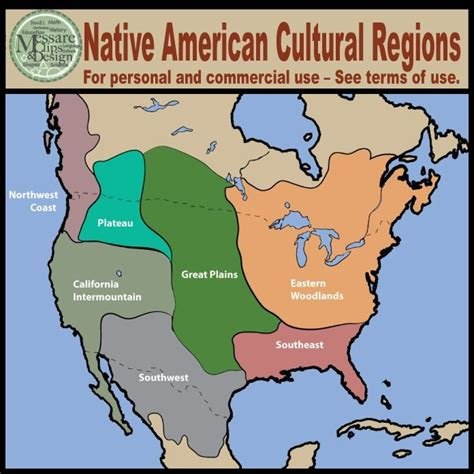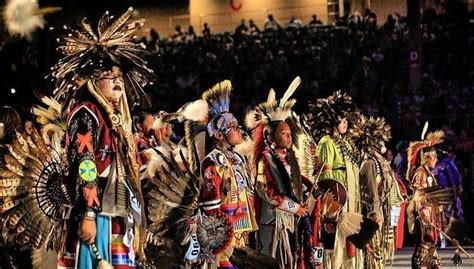Unveiling the Rich Diversity of Native American Cultures
Long before European explorers arrived on the shores of the Americas, a fascinating story of migration and settlement had already shaped the continent. Approximately 12,000 years ago, the ancestors of today’s Native Americans journeyed across a land bridge from Asia to what is now Alaska.
By the time European adventurers set sail in the 15th century, the Americas were home to over 50 million people, with around 10 million residing in what would become the United States. These early inhabitants spread south and east, developing distinct and diverse cultures.

To appreciate this rich heritage, anthropologists and geographers classify these varied groups into “culture areas.” These areas reflect shared environments and cultural traits, and North America (excluding Mexico) is typically divided into ten primary regions: the Arctic, Subarctic, Northeast, Southeast, Plains, Southwest, Great Basin, California, Northwest Coast, and Plateau.
The Arctic: Resilient Cultures in an Extreme Environment
Geography and People
The Arctic culture area, spanning parts of modern-day Alaska, Canada, and Greenland, is characterized by its cold, flat, and treeless terrain. This frozen desert was home to the Inuit and Aleut, who spoke dialects from the Eskimo-Aleut language family. The harsh climate resulted in a sparse, nomadic population.
Lifestyle
Arctic peoples, especially the Inuit, adapted to their environment by hunting seals, polar bears, and other game. They lived in dome-shaped homes constructed from ice blocks or sod and made clothing and tools from animal skins. The Aleut, located further south, established small fishing villages along the coast.
Modern Impact
Today, approximately 4.5 million Native Americans and Alaska Natives live in the U.S., with many descendants of Arctic peoples still residing in the region.
The Subarctic: Life Amongst Forests and Tundra
Geography and People
The Subarctic region, covering much of inland Alaska and Canada, is known for its swampy forests and waterlogged tundra. Its inhabitants are divided into two main language groups: Athabaskan speakers (such as the Tsattine, Gwich’in, and Deg Xinag) and Algonquian speakers (including the Cree, Ojibwa, and Naskapi).
Lifestyle
Travel in the Subarctic was challenging, relying on toboggans, snowshoes, and lightweight canoes. People lived in temporary shelters and followed caribou herds. The fur trade of the 17th and 18th centuries disrupted traditional ways of life, causing significant cultural and social changes.

The Northeast: Innovation and Conflict
Geography and People
The Northeast culture area extends from Canada’s Atlantic coast to North Carolina, reaching inland to the Mississippi River valley. It was inhabited by both Iroquoian and Algonquian speakers. Iroquoian groups, like the Cayuga and Seneca, lived in fortified villages along rivers, while Algonquian groups, such as the Pequot and Shawnee, settled in coastal farming and fishing communities.
Lifestyle and Challenges
Northeastern societies excelled in agriculture, growing crops like corn and beans. However, they faced internal conflicts and external pressures from European colonizers, leading to upheaval and displacement.
The Southeast: Agricultural Expertise and Cultural Resilience
Geography and People
The Southeast, situated between the Gulf of Mexico and the Northeast, was a fertile agricultural region. Tribes such as the Cherokee, Chickasaw, Choctaw, Creek, and Seminole were skilled farmers, cultivating maize and tobacco.
Historical Changes
By the time the United States gained independence, disease and displacement had severely impacted the Southeast’s Indigenous population. The Indian Removal Act of 1830 led to the forced relocation of these tribes to present-day Oklahoma, a journey known as the Trail of Tears.
The Plains: Nomadic Cultures of the Vast Prairies
Geography and People
The Plains culture area stretches from the Mississippi River to the Rocky Mountains, encompassing expansive prairies. Plains tribes, including the Crow, Blackfeet, and Comanche, engaged in settled hunting and farming before European contact. The arrival of horses in the 18th century transformed their lifestyles, making them more nomadic.
Lifestyle
Plains tribes used horses to follow buffalo herds and lived in portable teepees made from bison skins. Their cultures were significantly impacted by European settlers, who introduced guns, diseases, and commercial goods, disrupting traditional ways of life.
The Southwest: A Study in Diversity
Geography and People
The Southwest culture area, covering present-day Arizona, New Mexico, and parts of neighboring states, includes both sedentary farmers and nomadic groups. The Hopi, Zuni, and Yaqui are known for their elaborate pueblos and agricultural practices, while the Navajo and Apache led more nomadic lifestyles.

Historical Impact
By the time southwestern territories became part of the United States, many Indigenous peoples had already suffered from Spanish colonization. U.S. government policies in the 19th century further displaced these communities onto reservations.
The Great Basin: Survival in a Harsh Landscape
Geography and People
The Great Basin, located between the Rocky Mountains and Sierra Nevadas, is known for its deserts and salt flats. Inhabitants like the Bannock, Paiute, and Ute relied on foraging and hunting, living in easily portable shelters like wikiups.
Lifestyle and Changes
The arrival of horses and European prospectors in the mid-19th century prompted adaptations in Great Basin cultures. However, the discovery of gold and silver led to significant land loss and displacement.
California: A Tapestry of Cultures
Geography and People
Before European contact, California was one of the most densely populated regions in North America, with approximately 300,000 people and over 100 different tribes. Despite this diversity, many California tribes lived as hunter-gatherers, with a complex system of trade and peaceful inter-tribal relations.
Historical Impact
Spanish colonization in the 16th century drastically reduced the native population due to forced labor and disease. Missionaries like Junipero Serra played a significant role in this tragic period of cultural disruption.
The Northwest Coast: A Wealth of Cultural Heritage
Geography and People
The Northwest Coast, stretching from British Columbia to Northern California, is known for its mild climate and abundant natural resources. Peoples such as the Haida, Tlingit, and Chinook developed complex social structures supported by resources like salmon and shellfish.
Lifestyle
Northwest Coast tribes built large, permanent villages and developed intricate social hierarchies, with wealth and status measured by possessions and ceremonial contributions. The potlatch, an elaborate gift-giving ceremony, was central to their cultural practices.
The Plateau: Adaptation and Integration
Geography and People
The Plateau culture area, encompassing parts of Idaho, Montana, and eastern Oregon and Washington, includes tribes such as the Nez Perce and Yakama. These tribes lived in small villages and relied on fishing and foraging.

Lifestyle and Changes
The introduction of horses in the 18th century transformed Plateau economies and trade practices. However, by the late 19th century, many Plateau tribes were forcibly removed from their lands and resettled on reservations.